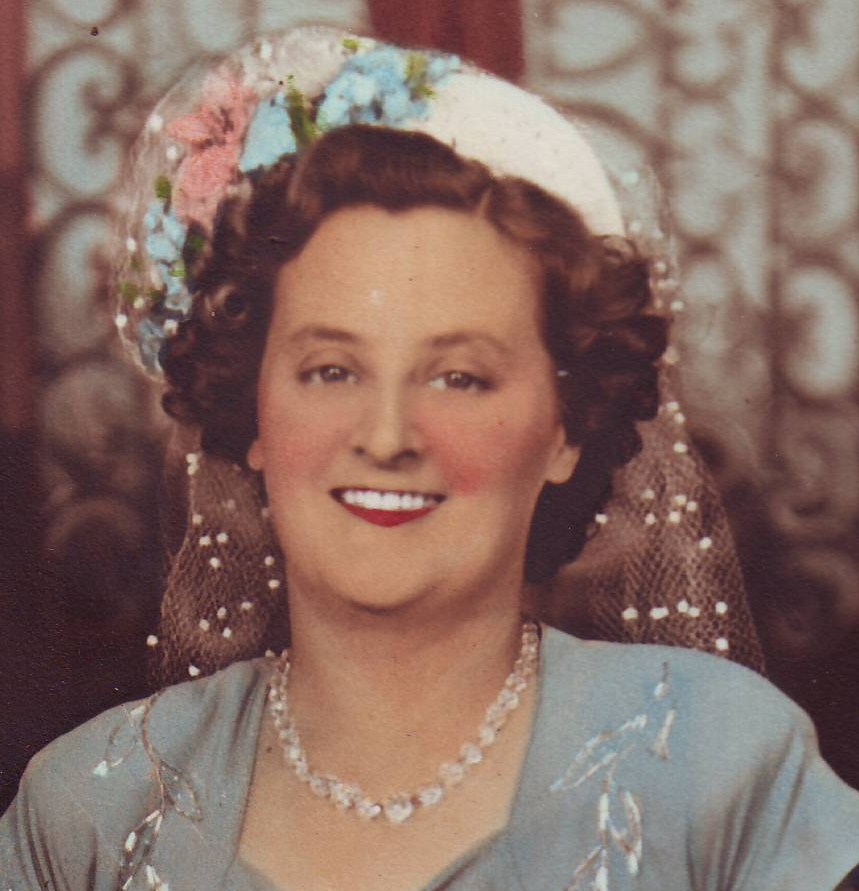5 minute read
Welcome to the first of my Sunday Storytelling blogs. Years ago I used to enjoy buying a physical newspaper and a coffee on a Sunday morning and spend time catching up with what had gone on in the world that week. I no longer do that as I get most of my news online but I do miss reading a good story on a Sunday morning; hence I aim to post here, one story every week.
So, I figured there was no better way to start this storytelling blog off by introducing you to the greatest storyteller I ever met; my maternal grandmother Connie!
Connie died 10 years ago but she still looms large in my life. I wonder what she would have made of the current crisis gripping the world. I suspect she would have just gotten on with it, something she had to do many times throughout her life when faced with a desperate situation. You see Connie was five years old when she lived through the 1918/19 Spanish flu pandemic. She was a teenager when the Great Depression hit. World War II disrupted her world significantly, as she faced German bombs falling on the streets of her native East London. She even joked to me years later about the time she went off to work as a bookkeeper, crawled under a cordoned-off area and proceeded into her building only to be stopped and asked had she not noticed that the building now had a large hole in it, from a 500 pounder. She was that keen to get to work and carry on regardless.
Then, in her mid-30s and still a spinster, as unmarried women were called in those days, she came back to Australia, where she was born, to start a new life. She ended up in Coonamble, some 500kms from Sydney. She married a local lad Charlie and over the next decade they had five children. Whilst I am blessed to have many photographs of Connie, I have chosen to share this particular one of her, on her wedding day in January 1949. Connie had always loved anything to do with romance and would often attend friends’ weddings or just watch strangers’ weddings. Less than two years after arriving back in Australia, she was getting married herself. Her husband to be however forbade her from wearing white. Connie assured me it was not because of any ‘pre-wedding activity’, but rather just a peculiarity of Charlie’s. Her brother Syd was upset for her when he saw her at the church in Lakemba, Sydney in her blue wedding dress. But Connie, ever the optimist, smiled and got on with it. You can see that attitude and the pride in her face in this photograph.

I often wondered how Connie coped with the two contrasting halves of her life; city versus country. My life has followed a similar path, in that I spent almost 20 years living in Sydney, enjoying all the delights of a big city which I found to really suit me. Then when I was in my late 30s, around the same age as Connie, I moved to the country, or in my case, back to the country, having grown up in a regional town and on a farm until my late teens. I understood how Connie had swapped lunches at fancy cafes and nights out at the West End theatres of London for the dry dusty streets of a town hundreds of miles from a big city. She had gone a step further than me and swapped her freedom for domestic slavery (in my opinion), eventually falling into line with what society expected of a woman of that era. But despite playing the role of wife and mother, then grandmother, she always, to me at least, retained some sense of her identity; that former life she had known and loved. She kept a degree of independence, continuing to work once her children were old enough to be self-sufficient and taking short trips away alone to visit family.
Once I moved to Sydney in my late teens, Connie and I would often have two-hour catch-up phone calls. Connie had a real nack for remembering the past in vivid detail. She was sometimes a little hazy on exact dates and ages but her recall of conversations in particular was strong. The colourful characters of her young life broke through time to emerge in full view to any of Connie’s audiences. I was captivated by the stories of her grandfather, mother, uncle and two aunts. She adored her two brothers and spoke often of them, but by the time I came along both were gone; Jack dead and Syd missing (stories for another time). Sharing my love of history with her I think made Connie feel safe to retreat to the past, back to a time where her first family lived on in her memory. Long gone but never forgotten. I’ve reached an age now where I appreciate the significance of this even more, an age where many people from my younger life are now gone. It is my job to ensure they are never forgotten. I thank Connie for showing me how.
